We independently evaluate all recommended products and services. If you click on links we provide, we may receive compensation. Learn more.
A panting dog seems so normal, right? Especially when temperatures rise. But heavy or constant panting, deep abdominal breathing, or panting when it's not hot outside can signal there's a problem with your pooch's health. By learning the reasons behind excessive dog panting, you'll be better at recognizing problems and making sure your best buddy stays safe and healthy.
What is Normal Dog Panting Like?
Your dog's skin doesn't sweat when he's hot like your skin does. So when Fido gets too hot, he pants—which Mercola Healthy Pets describes as "... rapid, shallow breathing that speeds up the evaporation of water from his tongue and inside his mouth and upper respiratory tract." As the water evaporates, it helps him regulate his body temperature. (Dogs do have sweat glands within their ears and underneath their paws, but these glands don't do much in terms of cooling off a dog.)
How to Keep Your Pet Healthy All Year Round
Good to know: The normal respiratory rate for resting or sleeping dogs is between 15 and 30 inhalations (breathing air in) and exhalations (breathing out) per minute, according to Texas A&M's College of Veterinary Medicine and Biomedical Sciences. Get to know your dog's normal respiratory rate by watching him when he is completely relaxed (while he's sleeping is best). Count how many complete breaths he takes in 15 seconds and multiply the number by four to get breaths per minute.
How Can I Tell if My Dog’s Panting is Abnormal?
Your dog's panting may be abnormal if you observe these signs identified by Mercola Healthy Pets:
- Your dog's respiratory rate is much higher than normal. For example, if your dog normally takes 20 complete breaths per minute and now he's taking 300 breaths per minute.
- Your dog is panting—and he hasn't been exercising and doesn't need to cool his body down.
- Your dog's panting seems louder or harsher than normal.
- Your dog is exerting more effort than normal while panting.
Potential Reasons for Dog Panting
While it's usually nothing to worry about, there are a variety of health issues that cause excessive panting that dog owners should be aware of.
Heat Exhaustion
Dogs are more sensitive to heat than their pet parents because canines pant rather than sweat. So if your pooch pants all the time or he's panting faster than normal, he could be overheated. The technical name for this condition is heat exhaustion, which means your dog's body temperature is too high and he can't regulate his own body heat. Noah's Ark Veterinary Hospital advises that mild heat exhaustion can be treated at home by wetting a dog with cool—not cold—water (paying special attention to his ears and paws), letting him dry out in front of a fan, and giving him cool or lukewarm water.
Since it's difficult to tell the difference between heat exhaustion and heatstroke (see below), call your veterinarian to see what additional steps should be taken.
Heatstroke
Severe heatstroke is a serious, sometimes deadly, medical emergency according to the College of Veterinary Medicine at the University of Illinois at Urbana-Champaign . Along with increased panting, signs of heatstroke include excessive salivation, diarrhea, vomiting, depression, and dizziness, the college says. To figure out if your dog is overheated, use a rectal thermometer to take his temperature. If it's more than 102.5 degrees, your dog has heatstroke.
If that's the case, "Get him to the vet as fast as you can," says Wailani Sung, MS, PhD, DVM, DACVB, a board-certified veterinary behaviorist whose practice is with the San Francisco SPCA. "When it comes to labored breathing, it's better to get your dog to the vet than to try home remedies."
Fear, Anxiety, or Stress
Your dog may be more sensitive to external stimuli than you realize. Loud noises such as fireworks or thunderstorms are common causes of fear, anxiety, and stress (FAS) in a dog. According to the Pet Health Network, your dog's excessive panting due to anxiety may be accompanied by other symptoms such as:
- Trembling
- Whining
- Yawning
- Drooling
- Licking his lips
- Sitting in a crouched position
- Flattened ears
- Tucked tail
- Clingy behavior
- Hiding
- Refusing food
- Incontinence or the loss of control of his bowels
Pain
Your dog can't tell you he's in pain; in fact, he may even try to hide it. He may even wag his tail. Still, heavy panting is one sign he's suffered an injury. Your dog may also exhibit enlarged pupils, a reduced appetite, a reluctance to lie down, restlessness, anxiety, and licking or biting at the pain site. In fact, says the Pet Health Network, dogs who are physically uncomfortable often pant long before they exhibit the more obvious indicators of pain such as whining or limping.
Your Dog Ate Poison
Along with heavy panting, watch for these additional signs of poisoning: vomiting, hyperactivity, panting, a racing heart rate, and tremors or seizures. Call your vet or emergency vet right away if you think your dog is poisoned. The Animal Poison Control Center, ASPCA, (888-426-4435) provides life-saving advice 24/7.
Your vet will need to know what you think your dog ate. According to the ASPCA, the common culprits include people food (most commonly chocolate, coffee, grapes, raisins, onions, garlic, and Xylitol), toxic plants, and everyday products such as household cleaners, cosmetics, and human medications.
Heart or Lung Disorder
Why is your dog breathing so hard? Because his heart can't pump enough blood to the lungs (which transfer oxygen to the bloodstream) and the rest of his body, according to the Cummings School of Veterinary Medicine at Tufts University. That means the dog's tissues are deprived of oxygen, so his respiratory rate increases to correct the situation. You may see these additional symptoms: Your dog tires more easily; he coughs while trying to breathe; and his tongue looks purple/blue instead of pink—a sign of inadequate oxygen. Call your vet immediately; she will diagnose the underlying problem and prescribe treatment.
6 Things Every Pet Owner Should Know About Heart Disease in Dogs
Your Dog's Larynx Isn't Working
Your dog's larynx (the opening to the windpipe) contains cartilage flaps that open wide while your dog is breathing and close when he swallows. According to the Pet Health Network, when a dog experiences laryngeal paralysis, one or both of the flaps fail to open normally. Your dog's breathing will become labored and difficult. This condition is common in middle-aged to older dogs as their larynx loses its normal function. Your vet may prescribe treatment ranging from moderation in exercise and weight loss to surgery.
Anemia
Obesity
Obesity causes this same symptom in people, right? Your dog pants because those extra pounds make it harder to get fresh, oxygenated blood to his vital systems. Your vet can help you come up with a diet and exercise plan for your pooch.
Cushing's Disease
Bad Reaction to Medication
Human medications have side effects. Dog medications do too—and panting may be one of them. The likely culprits are anti-anxiety meds or a steroid according to Sung.
High Blood Pressure
High blood pressure means your dog could be suffering from a kidney disease or perhaps tumors in his adrenal glands, per allivet.com. Typical signs include bleeding inside the eye (intraocular bleeding), detachment of the retina, and congestive heart failure accompanied by consistent coughing, rapid breathing, and difficulty breathing. Your dog may drink and urinate more often, lose his appetite, and vomit frequently if the kidneys are affected, says the site. If you observe any of these symptoms, take him to a veterinarian as soon as possible for a complete diagnosis.
Your Dog is a Brachycephalic (Flat-Faced) Breed
Dogs with short, flat, squashed-nose faces tend to pant a lot because of their challenged upper airways. This condition is called Brachycephalic Airway Obstructive Syndrome (BAOS). These dogs suffer lifelong breathing difficulties and an inability to pant efficiently which puts them at an increased risk for heatstroke. There are 24 total brachycephalic dog breeds including but not limited to:
- Pug
- Boxer
- Bulldog
- Boston terrier
- French bulldog
- Pekingese
- Lhasa apso
- Shih tzu
- Japanese chin
- Brussels griffon
- Cavalier King Charles spaniel
- Staffordshire bull terrier (Staffie)
- Affenpinscher
- Dogue de Bordeaux
- Shar pei
When Should I Start to Worry About Panting?
Call your veterinarian immediately if you observe any of the following symptoms, Sung says.
- Your dog pants for more than 15 minutes while at rest.
- Your dog struggles to breathe (e.g., deep abdominal breathing).
- Your dog is so tired he can only walk a short distance—while panting heavily—before he lies down.
- Your dog's gums look lighter or darker than their normal color—or they're tinged with blue—a sign your pet isn't getting enough oxygen.
If you take your dog to the veterinarian because of heavy panting, here's what to expect: The veterinarian will observe your pet and check his heart rate and respiratory rate. The vet will use a pulse oximeter to measure the saturation of oxygen in your dog's blood. Not enough oxygen being delivered and your dog will have difficulty breathing, Sung says.
If everything seems to be normal, the veterinarian will delve more deeply into your dog's condition—perhaps using bloodwork, an ultrasound, or a radiograph to determine the underlying problem. Among the more serious possibilities: A previously undiagnosed bleeding tumor—especially in the liver or spleen—can reduce the amount of oxygenated blood in a dog's system.
Preventing Heat Exhaustion and Heat Stroke
You can prevent panting caused by heat exhaustion and heat stroke by NOT exercising your dog in triple-digit heat, according to Sung. "After all, your dog wears a fur coat," she says.
And limit exercise with the brachycephalic breeds. "It doesn't take long," she says. "10 minutes in the yard with a bulldog or pug and their breathing will be different already."
Help Your Dog Overcome Fear, Anxiety, and Stress
If you believe your dog's panting is due to anxiety, put your dog in a spare room where you can block out noisemakers, loud music, and flashing lights, according to Fear Free, an initiative to prevent FAS in pets. Play soothing music or dampen scary sounds with a fan or white noise machine. Use Adaptil pheromone sprays or plug-ins to calm him down. You might also try temporarily placing cotton balls in his ears to muffle the noise.
Even if you're not sure your panting dog is in danger, take him to the veterinarian anyway to get a diagnosis and treatment plan. "You're never wrong to take your dog in, especially if he's having trouble breathing," Sung says. "It's better to be safe than sorry."

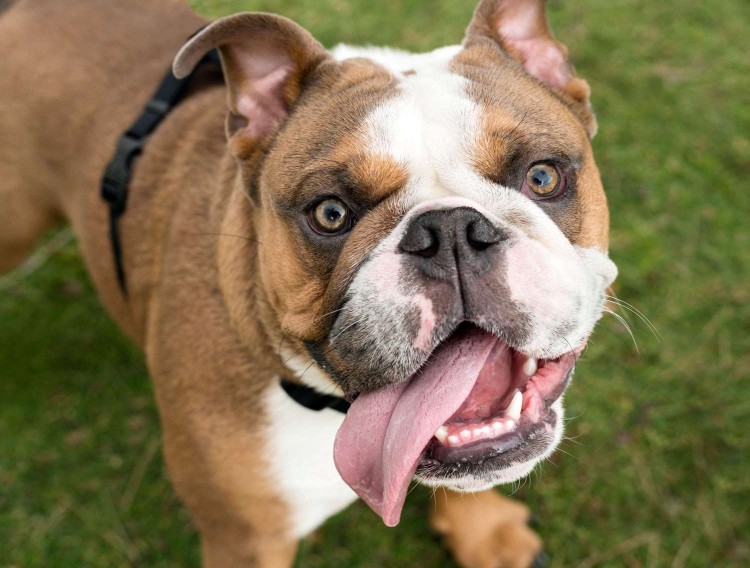
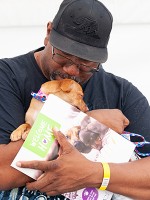
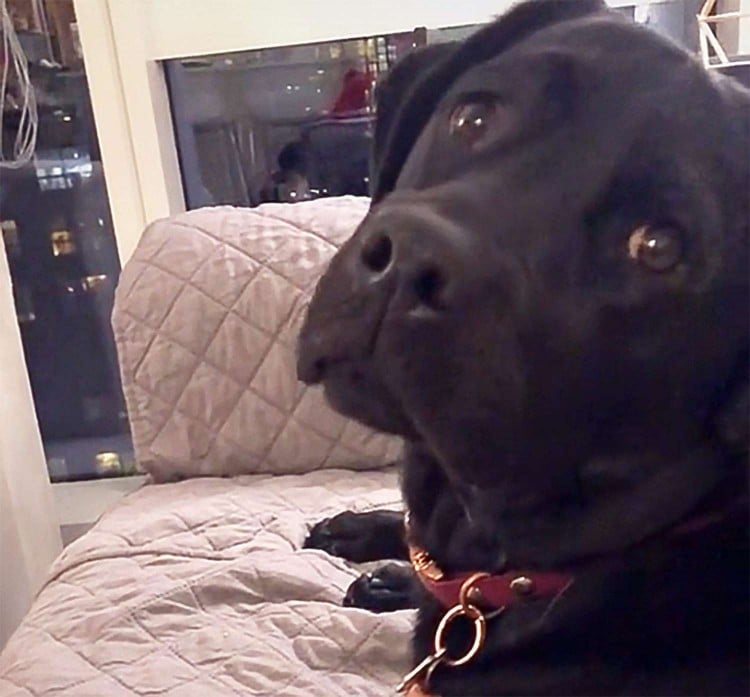
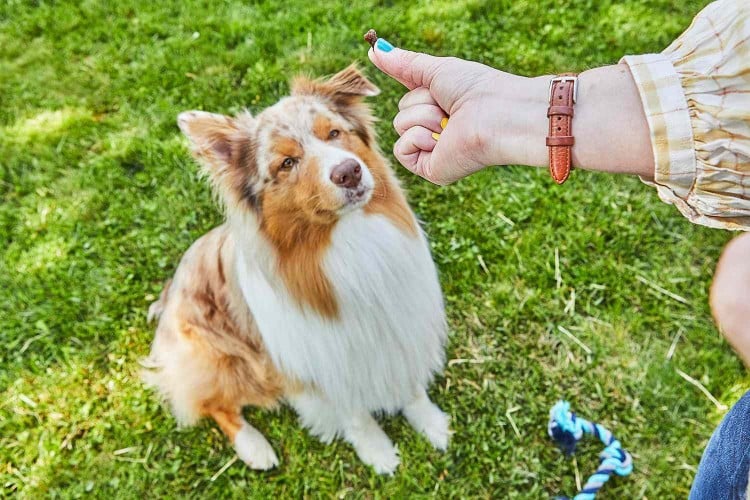
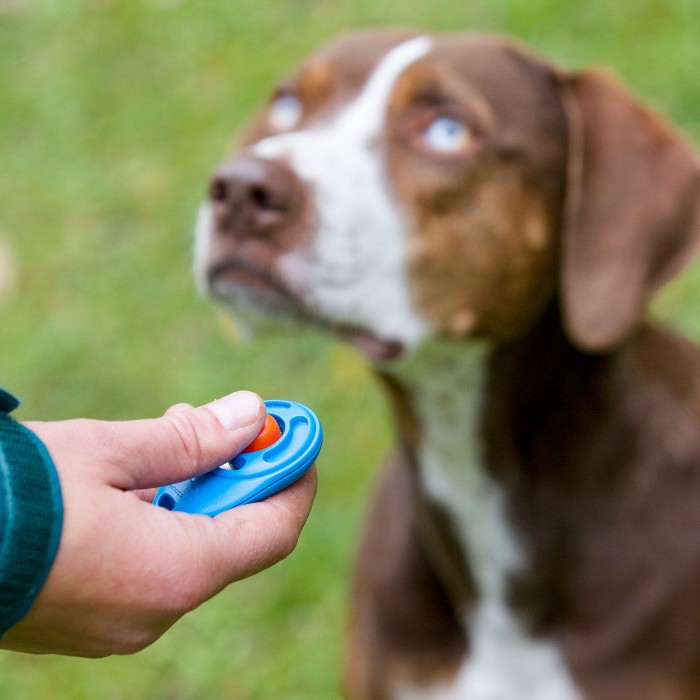
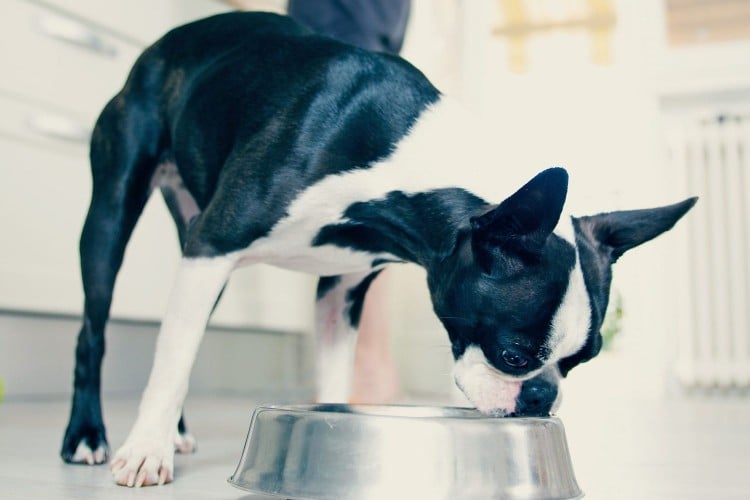
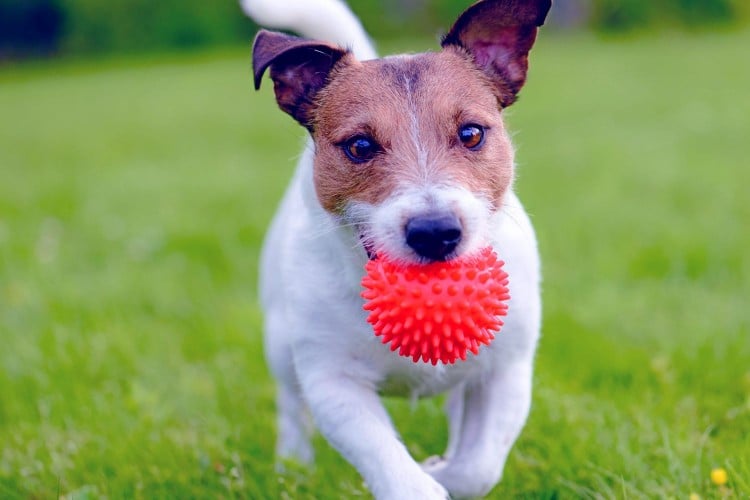
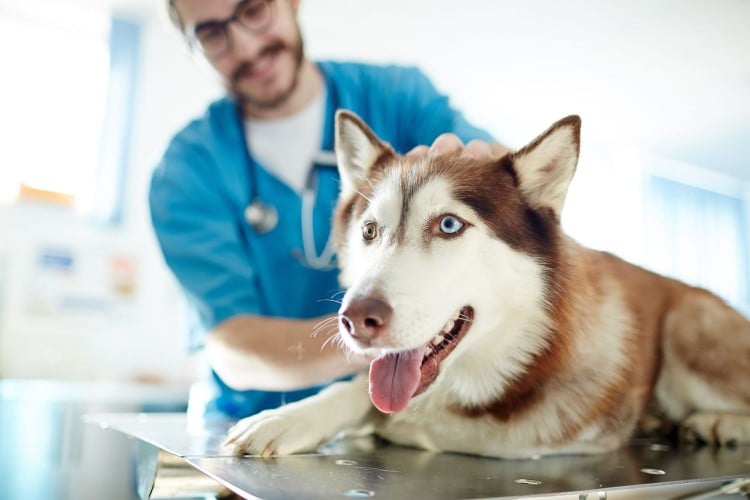
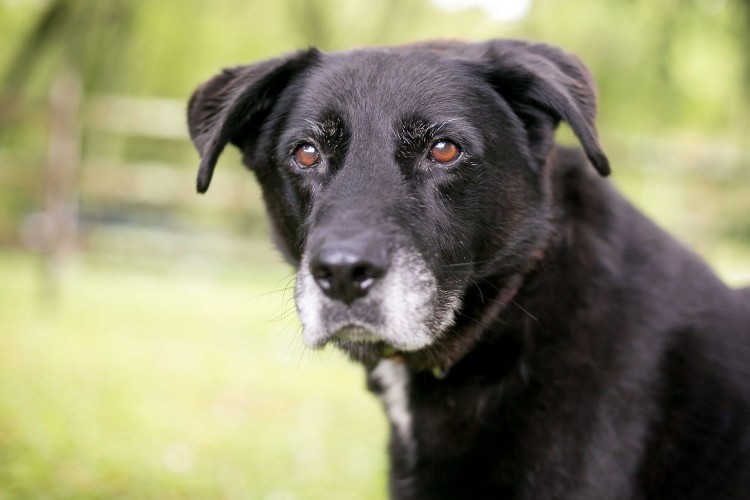
Comments on " Why is My Dog Panting So Much?" :